
Bodh Gaya, a quiet town in Bihar, holds the luminous stillness of a place touched by profound transformation. It is here, beneath the sacred Bodhi Tree, that Prince Siddhartha became the Buddha — awakening not just to his own truth, but to a path that would shape the spiritual destiny of millions. Today, that ancient enlightenment still radiates through every stone, leaf, and prayer whispered into the breeze. Bodh Gaya isn’t merely a destination; it’s a pilgrimage of the soul.
The Mahabodhi Temple, a UNESCO World Heritage Site, stands tall with centuries of devotion carved into its walls. Pilgrims from all corners of the world — monks in crimson robes, travelers in quiet reflection — walk its paths in reverence, circling the temple, meditating under the Bodhi Tree, or simply sitting in silence. It’s a powerful contrast to the outside world: here, time bends, and the mind finds space to breathe.
Beyond its sacred sites, Bodh Gaya reflects a gentle cultural blend. Tibetan monasteries, Thai temples, Japanese gardens — each offers its own interpretation of devotion, creating a mosaic of Buddhist architecture and practice. The local bazaars hum softly with the scent of incense, the clang of prayer bells, and the colorful swirl of prayer flags dancing in the wind. Every element contributes to a sense of quiet unity — different paths converging in peace.
Whether you’re a spiritual seeker or a curious traveler, Bodh Gaya leaves an imprint — not through grandeur, but through a deep, unshakable sense of calm that lingers long after you’ve left.
Best time to visit: October to March
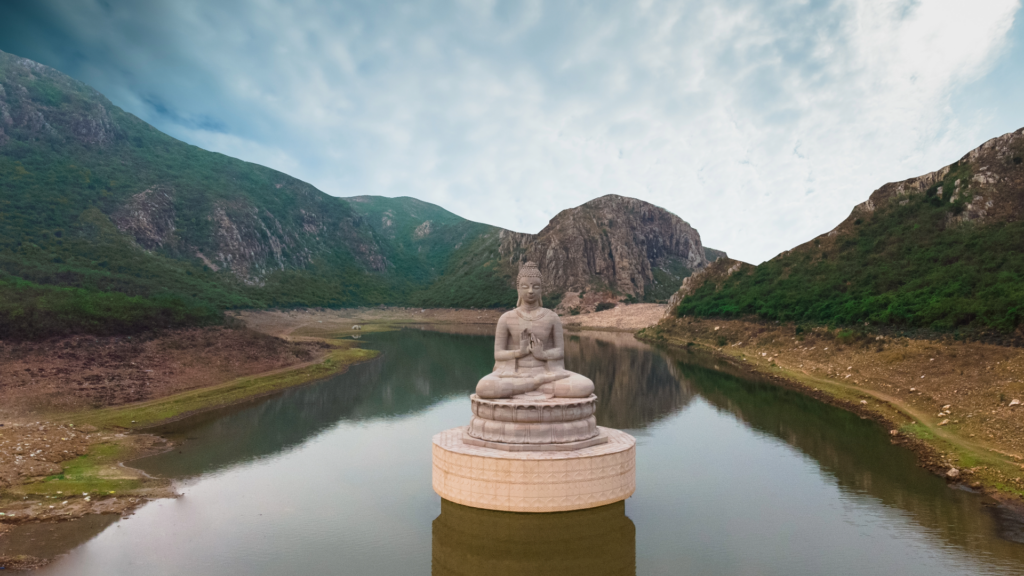
Rajgir, nestled in the heart of Bihar’s hills and legends, is a place where mythology, history, and serenity coexist in quiet conversation. Once the capital of the Magadha empire, this ancient town has witnessed the footsteps of kings, sages, and the Buddha himself. The landscape here is like a living scroll — dotted with monasteries, caves, and thermal springs — where every stone and shadow tells a story older than memory.
What makes Rajgir truly magical is its deep spiritual resonance. It was here that Lord Buddha meditated at Gridhakuta Hill and delivered many of his teachings, while Lord Mahavira, too, walked these paths centuries earlier. As you ride the ropeway up to the Vishwa Shanti Stupa, with panoramic views unfolding below, there’s a distinct sense of peace in the air — as though the silence itself has been steeped in wisdom. The chants of monks still echo through the valleys, calling not just to the ears but to the soul.
Beyond its spiritual aura, Rajgir is also a place of natural beauty and ancient science. The hot springs, believed to have medicinal properties, invite visitors to relax in their warmth, just as sages once did. The ruins of Ajatshatru’s Fort and the mysterious Cyclopean Wall, made of massive stone boulders, speak of a time when architecture was raw, bold, and enduring. And nestled among the green hills, the town’s rhythm slows, encouraging deep breaths and quiet reflections.
Whether you're walking the ancient paths of sages or soaking in the timeless atmosphere, Rajgir is not just a destination — it’s a gentle return to the essence of wisdom, simplicity, and wonder.
Best time to visit: October and March
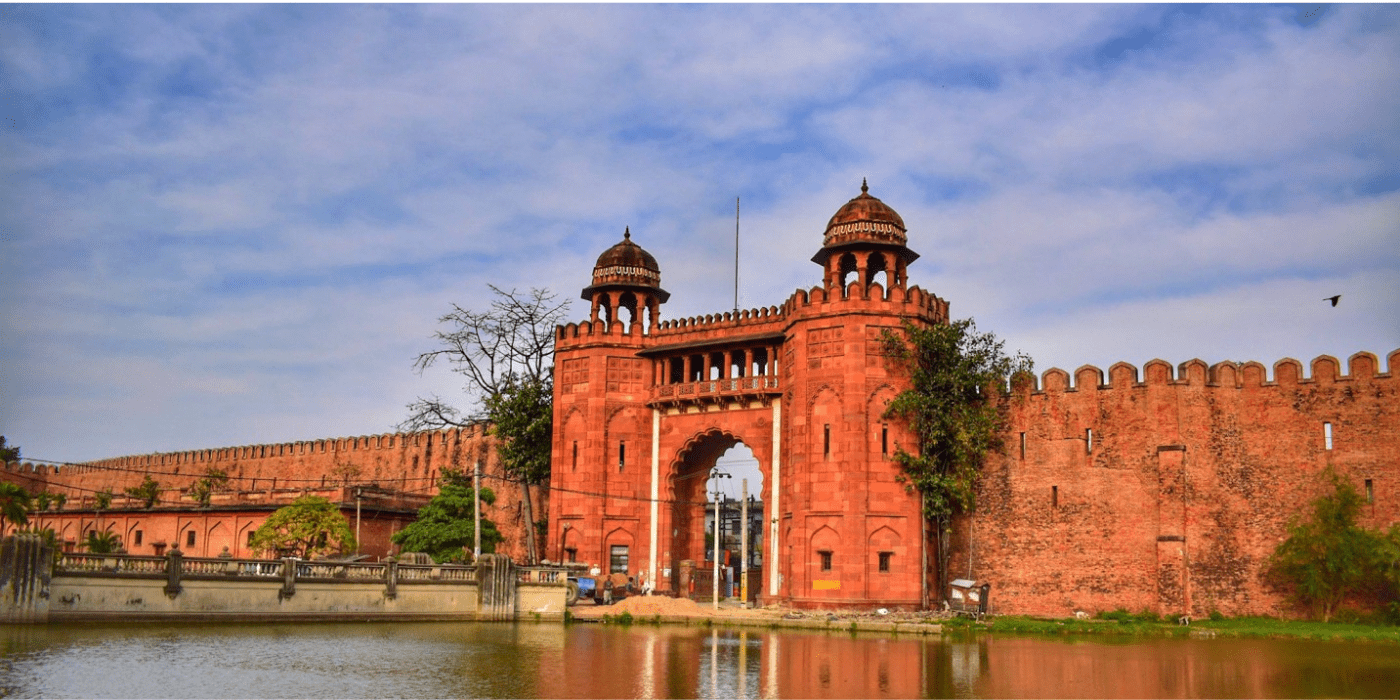
Darbhanga, often called the "Cultural Capital of Bihar," is a city that quietly shimmers with regal heritage, Maithili tradition, and intellectual richness. Nestled in the heart of the Mithila region, Darbhanga carries the essence of classical music, fine art, and spiritual depth in its soul. Walk through its lanes, and you’ll feel echoes of a royal past blended seamlessly with vibrant local life — from grand palaces to temple bells, from poetic verses to street conversations in Maithili.
What makes Rajgir truly magical is its deep spiritual resonance. It was here that Lord Buddha meditated at Gridhakuta Hill and delivered many of his teachings, while Lord Mahavira, too, walked these paths centuries earlier. As you ride the ropeway up to the Vishwa Shanti Stupa, with panoramic views unfolding below, there’s a distinct sense of peace in the air — as though the silence itself has been steeped in wisdom. The chants of monks still echo through the valleys, calling not just to the ears but to the soul.
Beyond its spiritual aura, Rajgir is also a place of natural beauty and ancient science. The hot springs, believed to have medicinal properties, invite visitors to relax in their warmth, just as sages once did. The ruins of Ajatshatru’s Fort and the mysterious Cyclopean Wall, made of massive stone boulders, speak of a time when architecture was raw, bold, and enduring. And nestled among the green hills, the town’s rhythm slows, encouraging deep breaths and quiet reflections.
Best time to visit: October and March

Rohtas, a district steeped in tales of valor, architecture, and nature’s grandeur, sits like a forgotten jewel in the heart of Bihar. At its core lies the mighty Rohtasgarh Fort, perched atop the Kaimur Hills, guarding centuries of history within its weathered walls. Once an indomitable stronghold, it has witnessed the rise and fall of dynasties — from Sher Shah Suri to the Mughals — and still stands proud, echoing stories through its massive gates, ruined palaces, and hauntingly beautiful silence.
The journey to the fort itself is as captivating as the destination. A winding path through dense forest and quiet hills creates a sense of mystery and anticipation. As you ascend, the noise of the modern world fades, replaced by the rustle of leaves and the whispers of legends. Every corner of the fort — from the royal hammam to the stepwells and temples — speaks of an era where strategy, splendor, and spirituality coexisted.
Beyond its iconic fort, Rohtas reveals a rich tapestry of natural wonders and cultural depth. The Tutla Bhawani Waterfall, hidden within forested valleys, offers a surreal escape, while local fairs and traditions breathe life into the district’s vibrant soul. Agriculture remains central to life here, and you’ll often find golden fields stretching beneath clear skies, adding a rustic charm to the region’s identity.
Best time to visit: October to February
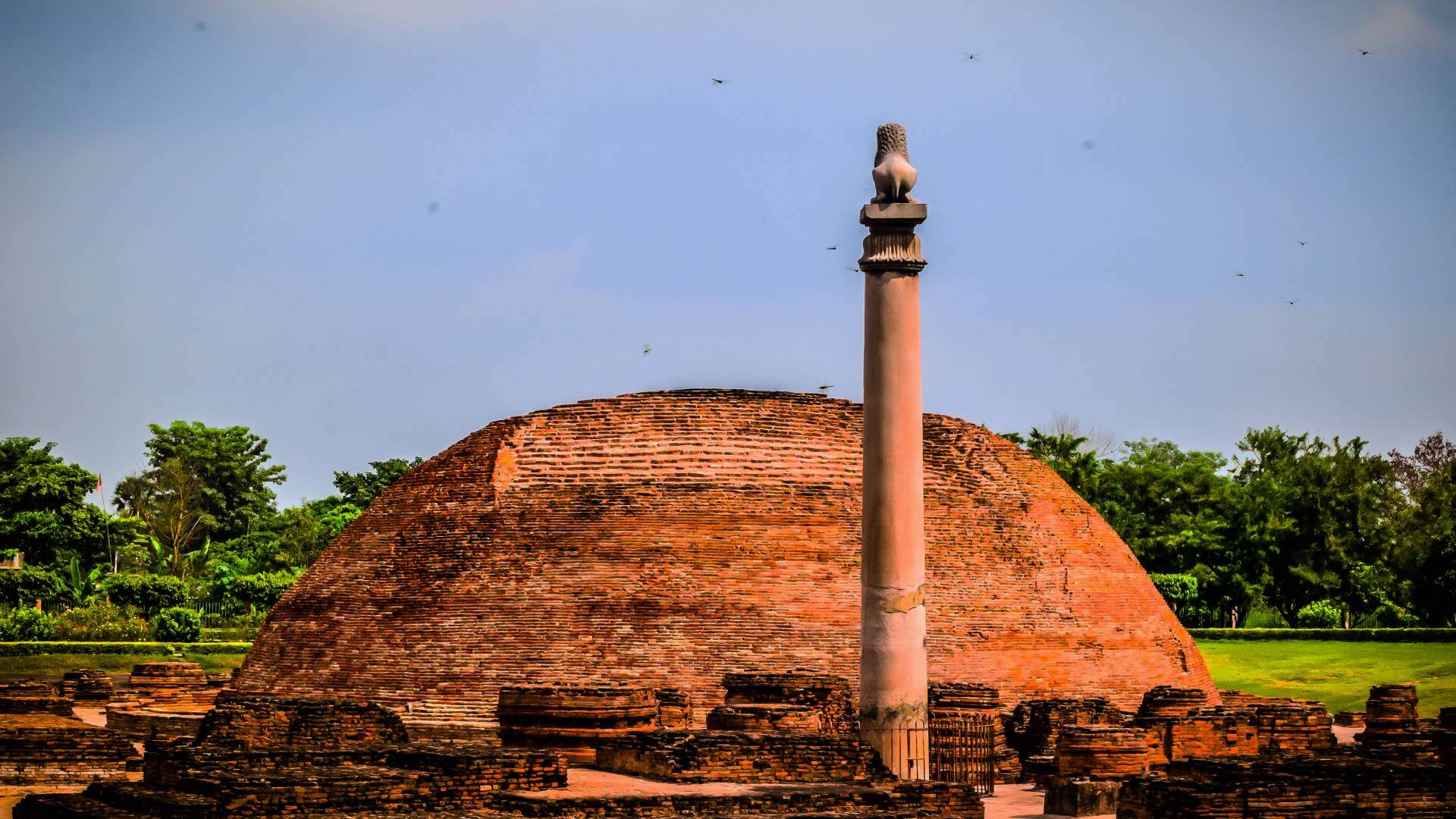
Vaishali, one of the world’s oldest republics, is a land where history isn’t just remembered — it lingers in the air, etched into the very soil. This ancient city of Bihar was once a flourishing center of politics, trade, and spirituality, long before modern civilizations took shape. It’s here that Lord Mahavira was born, and where the Buddha delivered his last sermon — making Vaishali sacred to both Jainism and Buddhism, and a symbol of timeless wisdom and peace.
Walking through Vaishali feels like stepping into a gentle reverie. The ruins of ancient stupas and monasteries stand calmly under the open sky, whispering stories of enlightenment and democratic ideals from over two millennia ago. The Ashokan Pillar, still proudly upright, is not just a monument — it’s a reminder of the Emperor’s devotion to Dharma and his connection to this hallowed land. The Vishwa Shanti Stupa, with its serene white dome, adds a touch of tranquility to the historical landscape.
Yet Vaishali is not frozen in time. The town pulses with the quiet rhythms of rural life — farmers tending fields, children playing by lotus ponds, and festivals that bring color and community to every season. The simplicity of village life blends beautifully with the town’s profound spiritual heritage, creating an experience that’s as grounding as it is inspiring.
Whether you’re a seeker of history, spirituality, or quiet beauty, Vaishali offers not just a glimpse into the past, but a peaceful perspective on life that still feels deeply relevant today.
Best time to visit: October to March
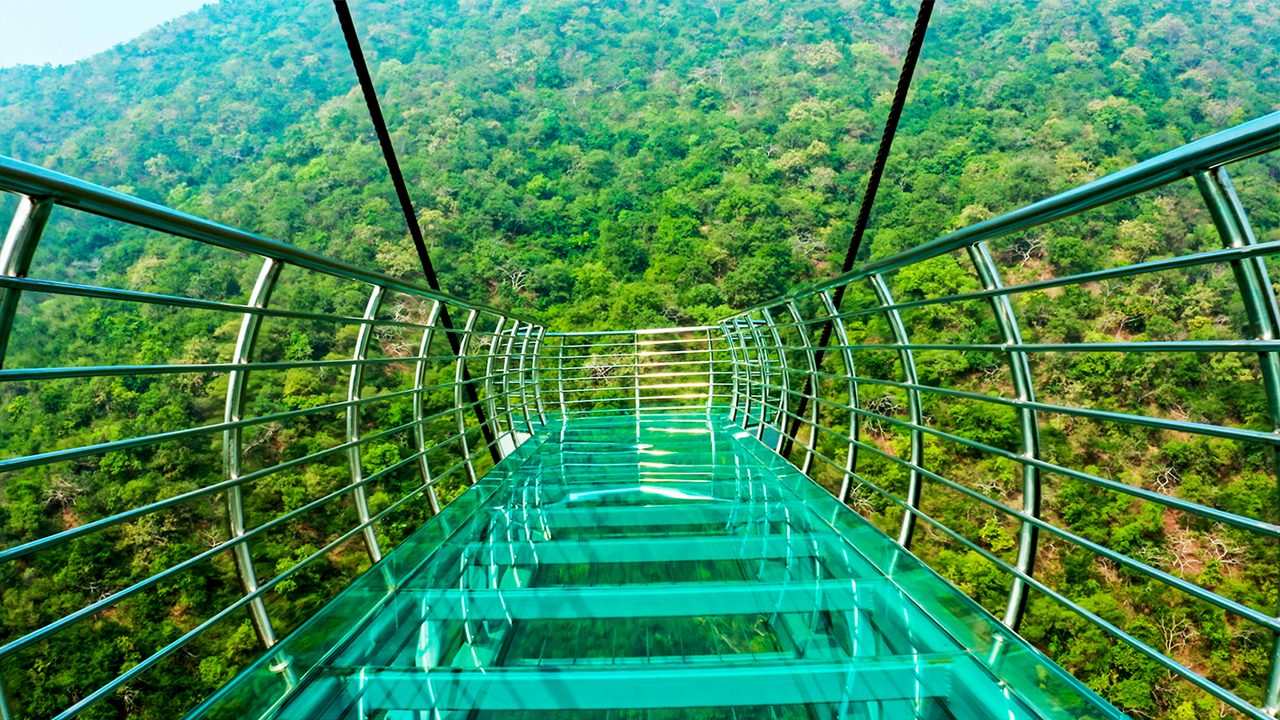
The Glass-Floor Bridge in Bihar, gracefully suspended over the scenic Rajgir hills, is not just an architectural marvel — it’s a thrilling blend of nature, adventure, and modern design. Modeled after China’s famous glass bridges, this transparent walkway offers visitors a rare chance to quite literally walk on air, with the forested valleys and rocky landscapes unfolding dramatically beneath their feet. Every step here is a mix of awe and adrenaline.
Located in Rajgir Nature Safari Park, this bridge has quickly become a hotspot for tourists, photographers, and thrill-seekers alike. As you look down through the crystal-clear floor, your senses heighten — the drop may test your courage, but the surrounding views reward your bravery. Framed by misty hills and vibrant greenery, the experience feels both surreal and cinematic, especially during sunrise or sunset.
But it’s not all about the thrill. The bridge is part of a larger eco-tourism initiative, which includes nature trails, ziplining, and serene ropeway rides to Buddhist landmarks. It’s a place where technology meets tradition — where the natural serenity of Rajgir harmonizes with modern adventure. This balance makes it perfect for families, friends, or even solo travelers looking to embrace something bold yet beautiful.
Whether you’re conquering your fear of heights or simply soaking in the view, a walk across this bridge is a memory that will stay suspended in your mind long after you’ve crossed.
Best time to visit: October to March
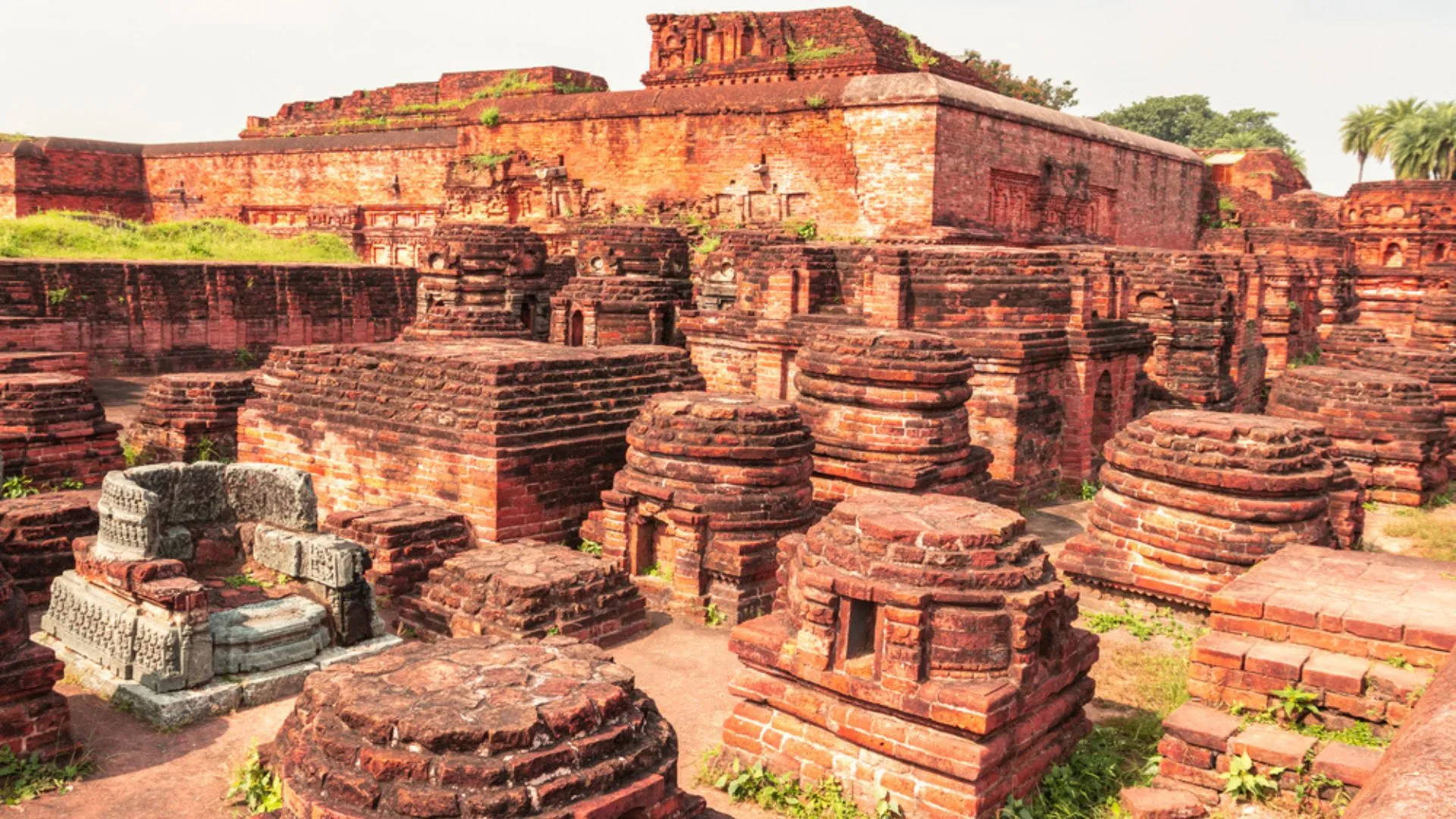
Nalanda University is not just a historical site — it’s a living legend of global learning, where knowledge once flowed freely across borders, cultures, and centuries. Established in the 5th century CE, Nalanda was one of the world’s first residential universities, drawing scholars from as far as China, Korea, Tibet, and Persia. Set in the quiet heart of Bihar, the ruins of Nalanda still hum with the energy of ancient wisdom, philosophical debates, and the timeless pursuit of truth.
As you walk through its red-brick courtyards, massive libraries, lecture halls, and monasteries, you can almost hear the echoes of Sanskrit chants, Buddhist discourses, and academic conversations that once defined the campus. The layout of the university — systematic, sophisticated, and expansive — reveals a time when intellectual ambition shaped architecture. At its peak, Nalanda housed over 10,000 students and 2,000 teachers, making it an epicenter of learning far ahead of its time.
Today, Nalanda stands as both a UNESCO World Heritage Site and a symbol of India’s deep academic roots. The Nalanda Archaeological Museum nearby adds to the experience with ancient manuscripts, sculptures, and artifacts that paint a vivid picture of the university's glory days. Nearby, the modern Nalanda University (revived in 2014) continues this legacy, bridging past and present through global, interdisciplinary education.
Best time to visit: October to March
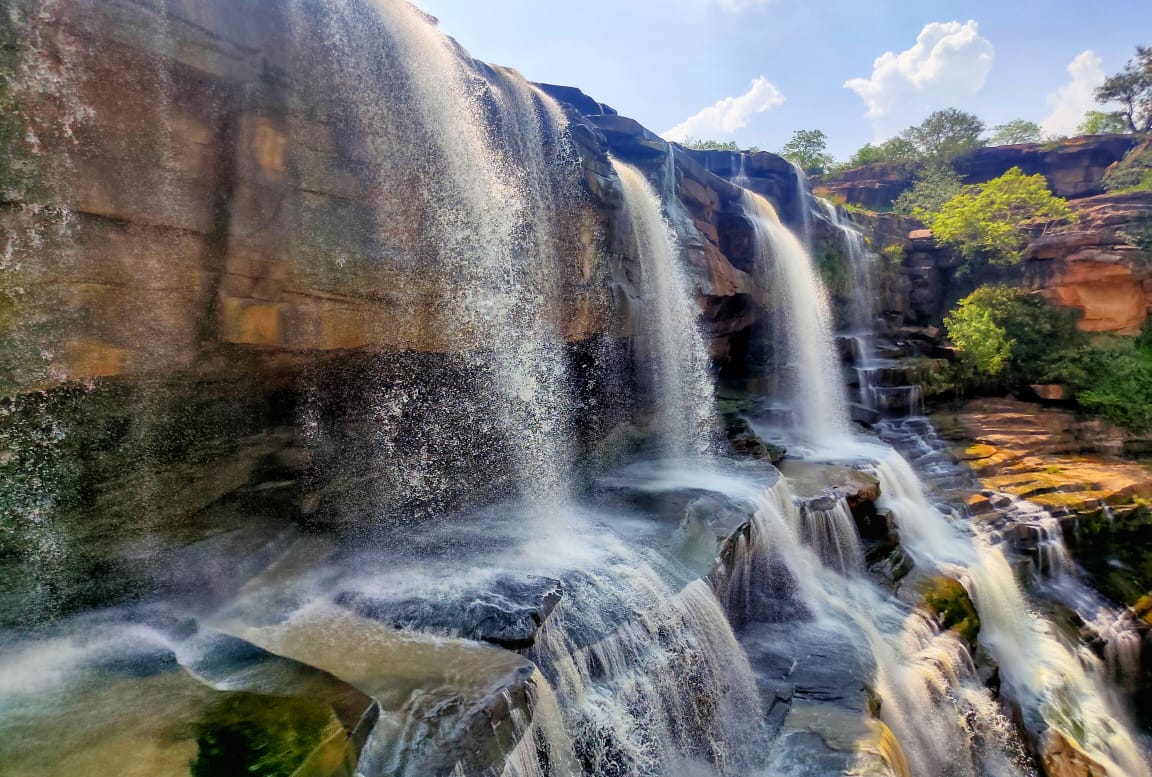
Karkat Waterfall, nestled in the lush forests of Kaimur district in Bihar, is one of the region’s best-kept natural secrets — a hidden cascade that stirs both adventure and serenity in equal measure. Surrounded by rugged cliffs, dense greenery, and the soothing sounds of flowing water, this waterfall offers an untouched escape from the noise of modern life. The path leading to it winds through wild terrain, making the journey as rewarding as the destination itself.
What sets Karkat Waterfall apart is not just its beauty, but its unique role in conservation. This area has long been known as a natural habitat for crocodiles, and today, it serves as part of a crocodile conservation and eco-tourism project. With observation decks and safe viewing points, visitors can witness these ancient reptiles basking in the sun or gliding silently through the water — an experience that’s rare, raw, and humbling.
During the monsoon and post-monsoon months, the waterfall roars to life, plunging dramatically into the pool below and turning the entire area into a mist-kissed paradise. It becomes a haven for nature lovers, photographers, and anyone seeking solitude in the wild. Despite its offbeat charm, Karkat remains relatively untouched by heavy tourism, giving it an authentic, almost sacred stillness.
Beyond its visual allure, Karkat Waterfall is also a place of quiet introspection — where the rhythmic fall of water seems to wash away the chaos of daily life. Locals often visit not just for recreation, but to reconnect with the natural world and their own roots. It’s the kind of place where time slows down, where the air feels fresher, and where every rustling leaf or distant bird call becomes part of a soothing soundtrack. In a world that’s constantly rushing, Karkat offers something rare: a moment to pause, breathe, and just be.
Best time to visit: July to February

Valmiki National Park, tucked away in the northwestern tip of Bihar along the Indo-Nepal border, is a wilderness like no other — raw, mysterious, and richly alive. Cradled by the majestic Himalayan foothills and nourished by rivers like the Gandak and the Pandai, the park unfolds as a vibrant mosaic of grasslands, wetlands, and dense Sal forests. It’s Bihar’s only tiger reserve and one of India’s most biodiverse sanctuaries, making it a haven for wildlife lovers and nature seekers alike.
As you journey deeper into Valmiki’s wild heart, every rustle in the underbrush might signal the presence of a leopard, a sloth bear, or the elusive Royal Bengal Tiger. Herds of spotted deer, wild boar, and langurs grace the forest trails, while vibrant hornbills and peacocks dance through the canopy above. The thrill here is not just in what you see — but in what you might see, around the next bend or behind the next tree. It’s a place that stirs your primal senses and leaves you breathless with wonder.
Yet Valmiki is more than just a wildlife sanctuary — it's a landscape woven with stories. Legends link the area to Sage Valmiki, author of the Ramayana, and to Luv and Kush, the sons of Lord Rama, adding a spiritual aura to its natural grandeur. Tribal communities like the Tharu people live in harmony with the forest, adding layers of cultural richness and a chance to witness sustainable living at its finest.
Best time to visit: November and March
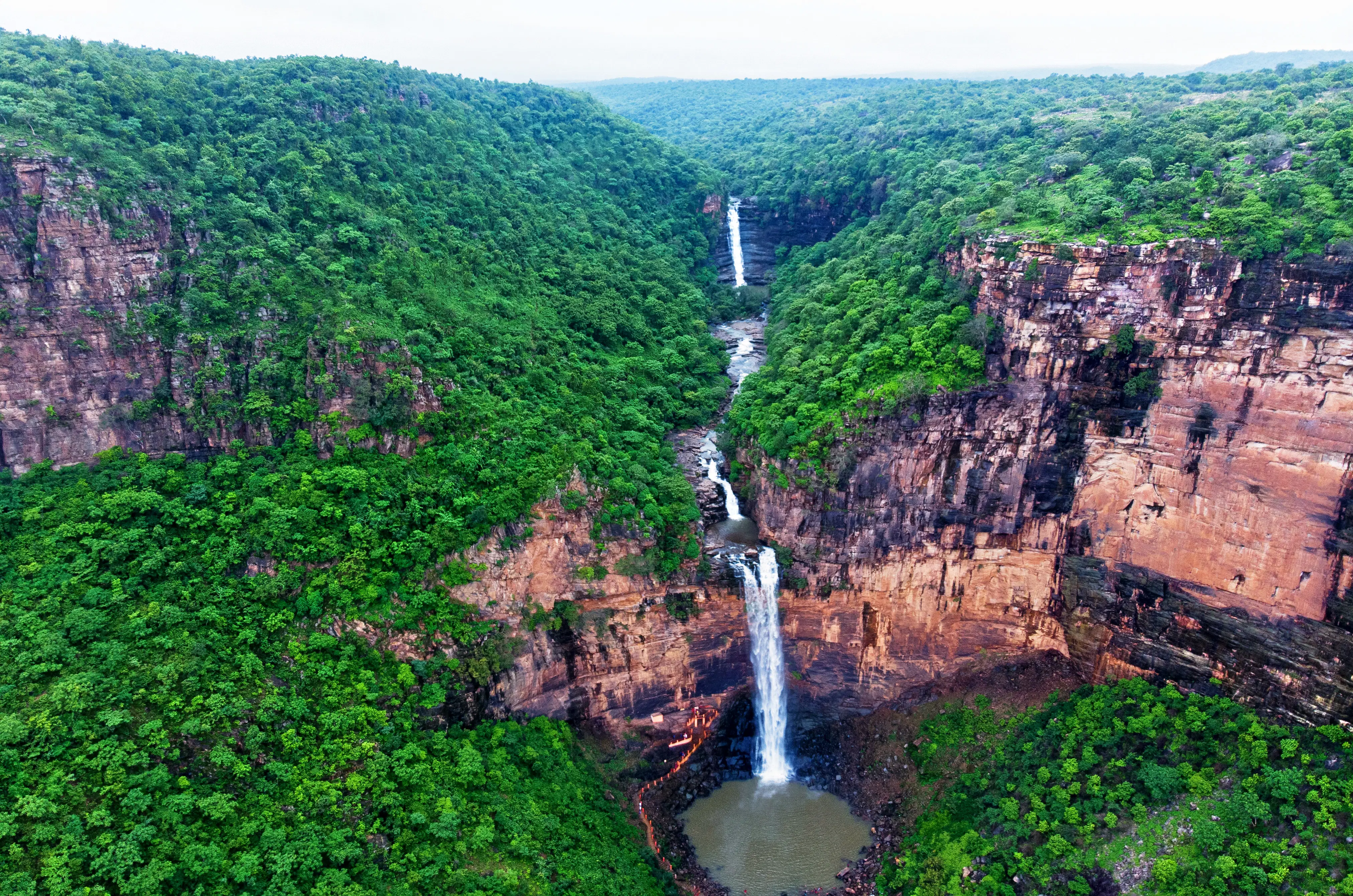
Tutla Bhawani Waterfall, nestled near the Rohtas hills in Bihar, is a breathtaking natural gem wrapped in both spiritual significance and scenic wonder. Cascading gracefully through the rocky cliffs and lush greenery, the waterfall forms a pristine pool below, creating a serene spot that feels like nature's own sanctuary. The sound of the water crashing against the stones blends with birdsong and rustling leaves, offering a tranquil escape from the noise of the world.
What makes Tutla Bhawani truly special is its deep connection to faith — the waterfall is named after the revered Tutla Bhawani Temple, dedicated to Goddess Durga, which sits peacefully near its base. Pilgrims and tourists alike find solace here, drawn not just by the beauty of the falls but by the spiritual calm that seems to linger in the air. It’s a rare place where nature and divinity coexist, each amplifying the presence of the other.
The path to the falls is a scenic adventure of its own, taking you through winding village roads and forest trails. As you approach, the roar of the water grows louder, building anticipation before the dramatic reveal of the falls themselves. Whether you're coming to offer prayers, capture the perfect photograph, or simply sit and let the moment wash over you — Tutla Bhawani never disappoints.
Adding to its allure, Tutla Bhawani Waterfall remains refreshingly untouched by commercial tourism, preserving its raw and authentic charm. Locals often speak of the area with reverence, not just for its religious importance, but for the peace it brings to anyone who visits. The gentle mist rising from the falls, the soft crunch of leaves underfoot, and the occasional glimpse of wildlife nearby make every moment feel intimate and alive. It’s the kind of place where time slows, and you leave not just with photos — but with a sense of renewal.
Best time to visit: August to February
